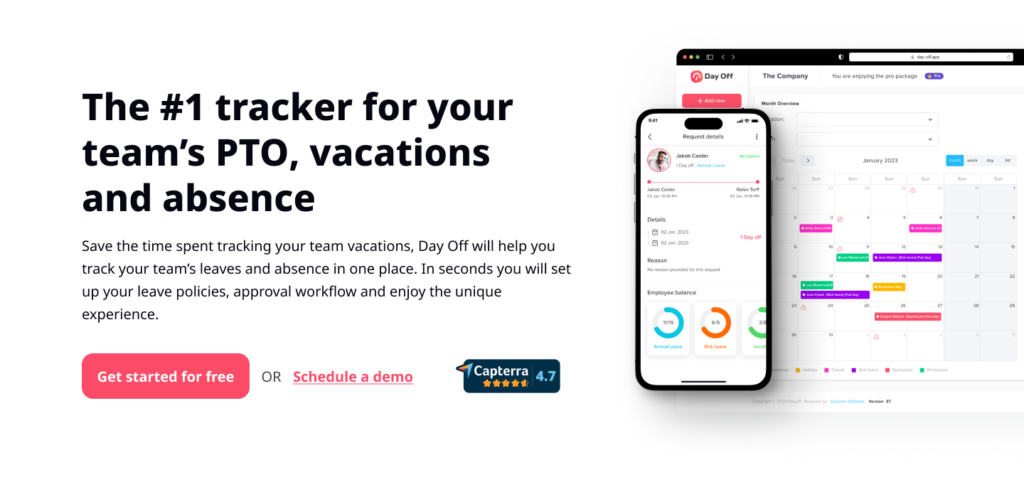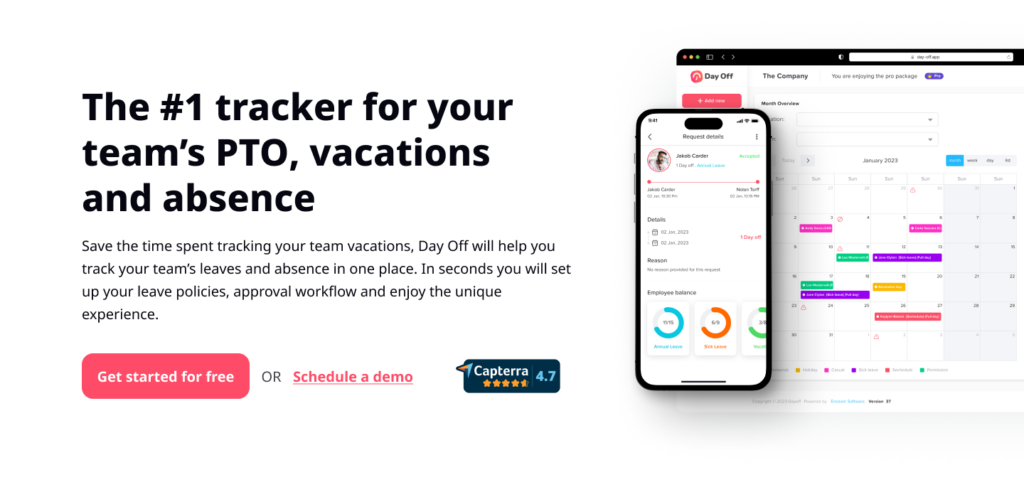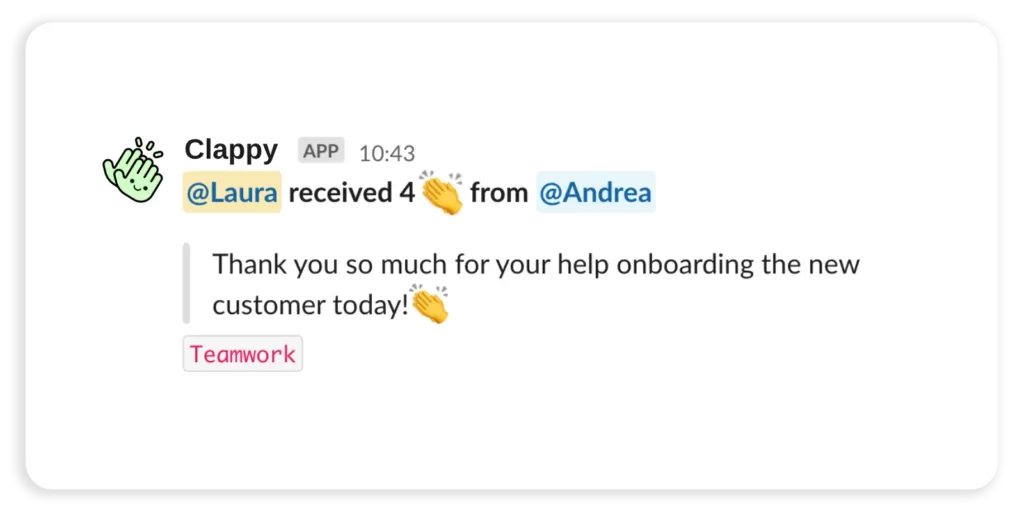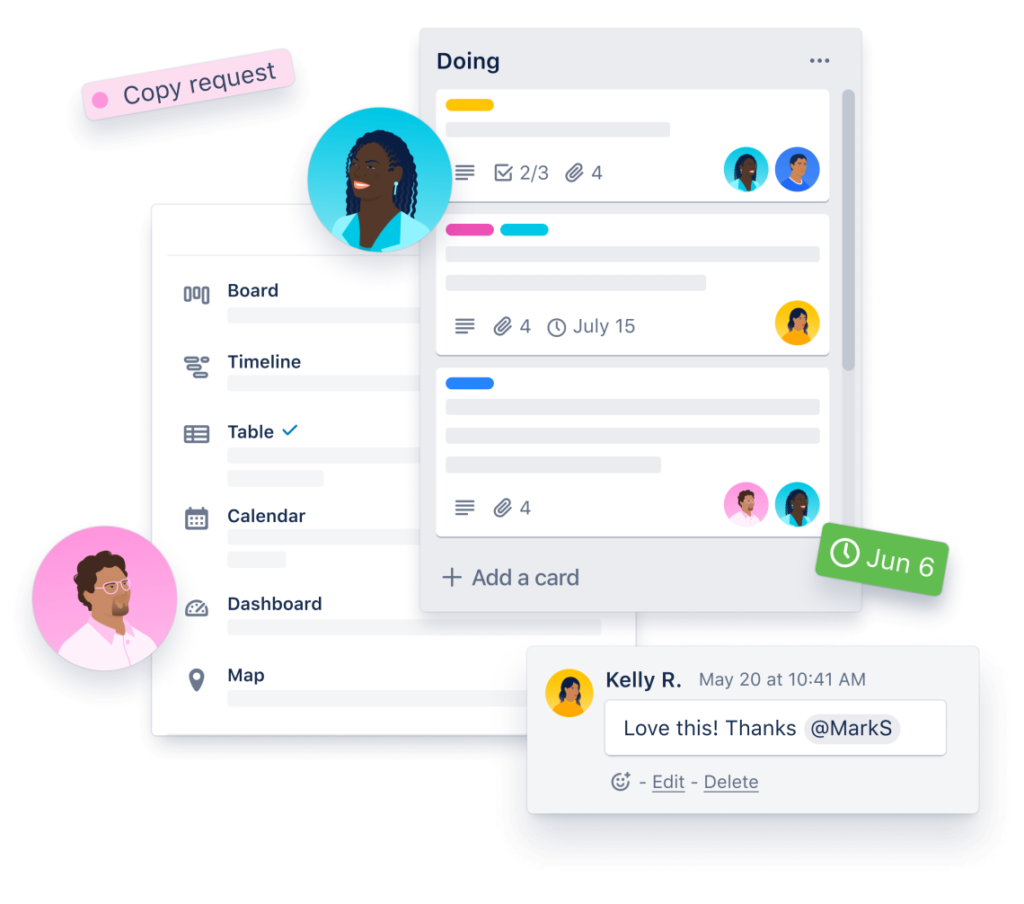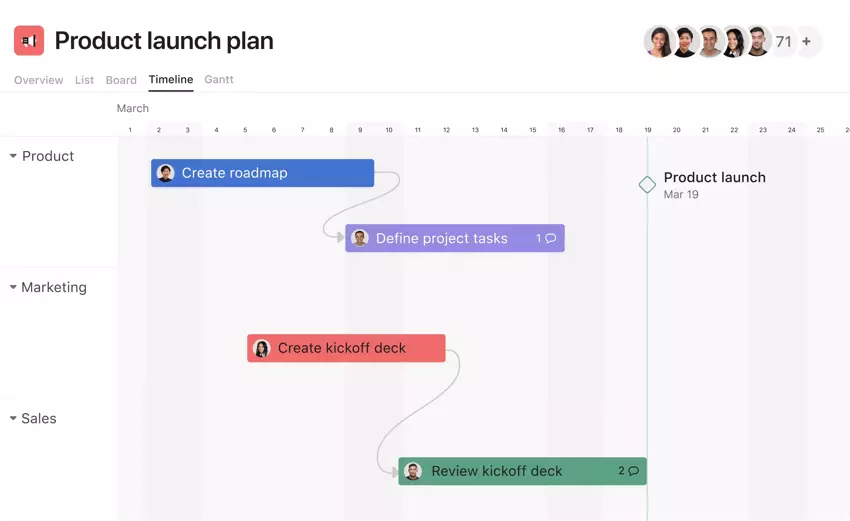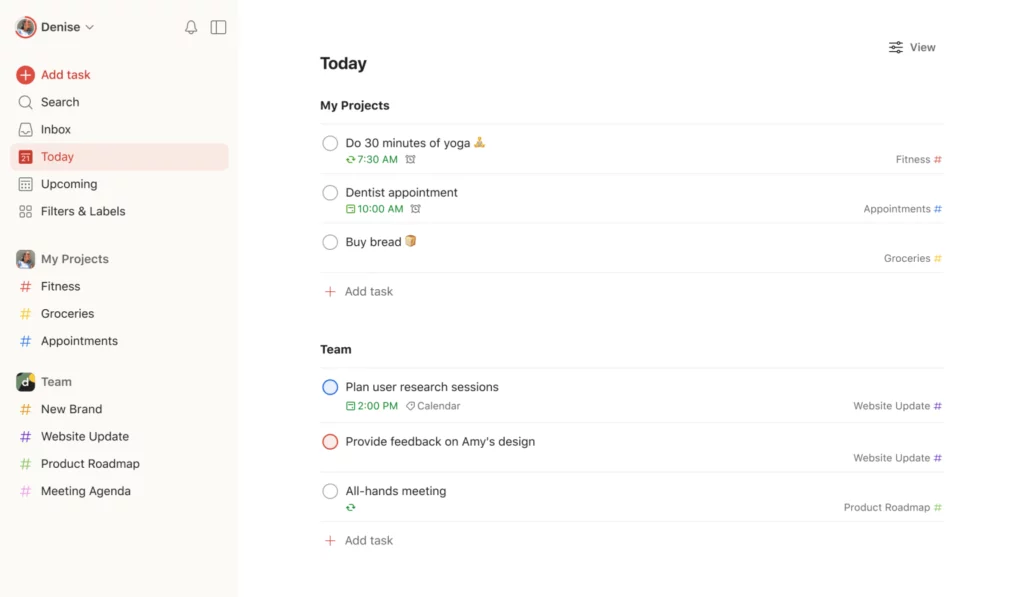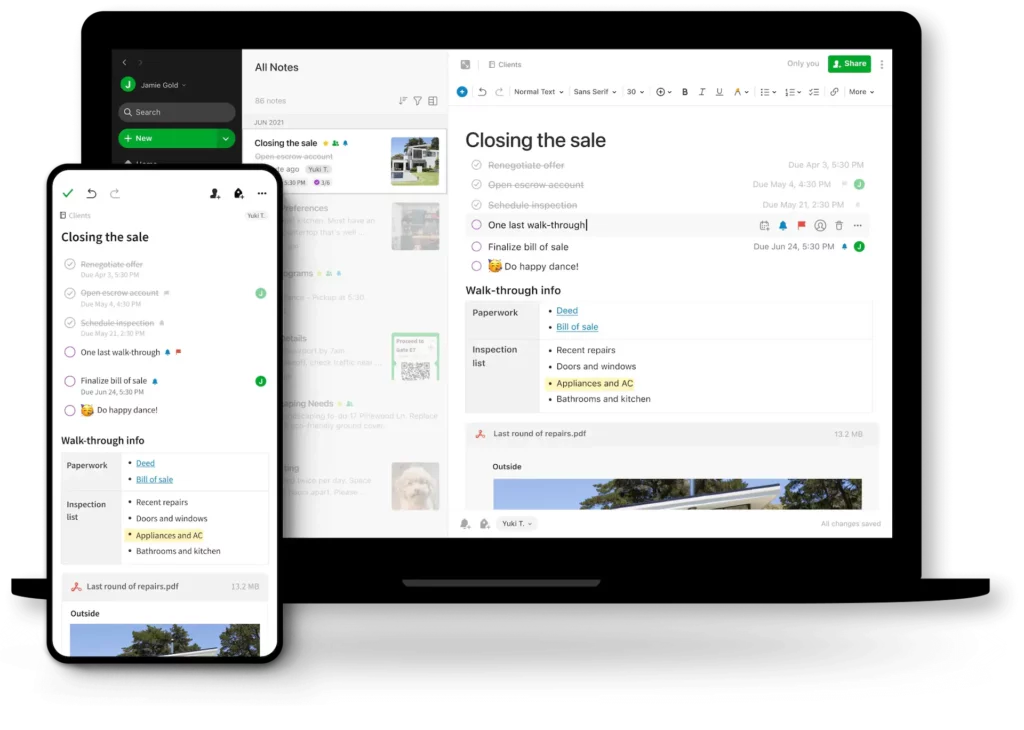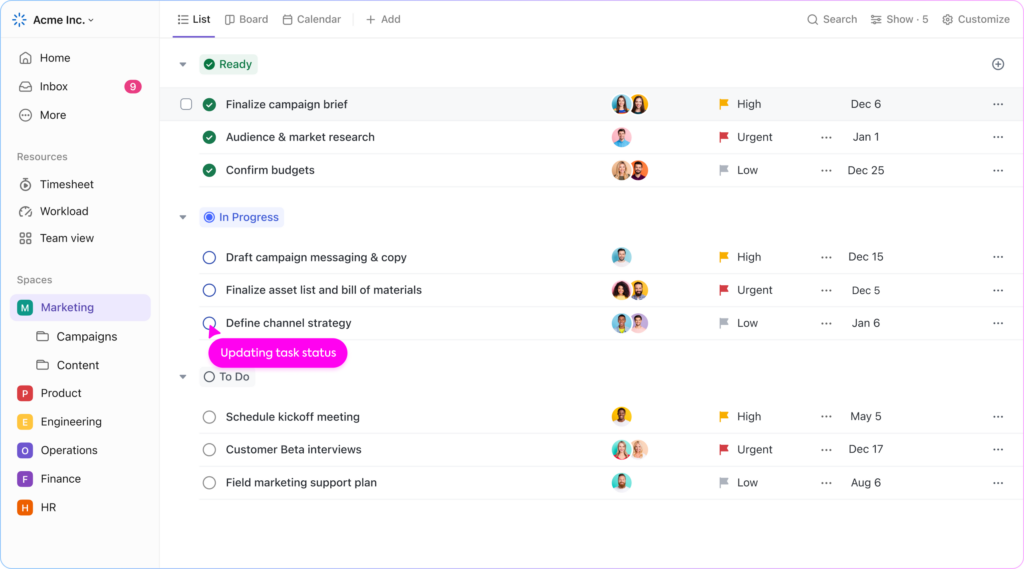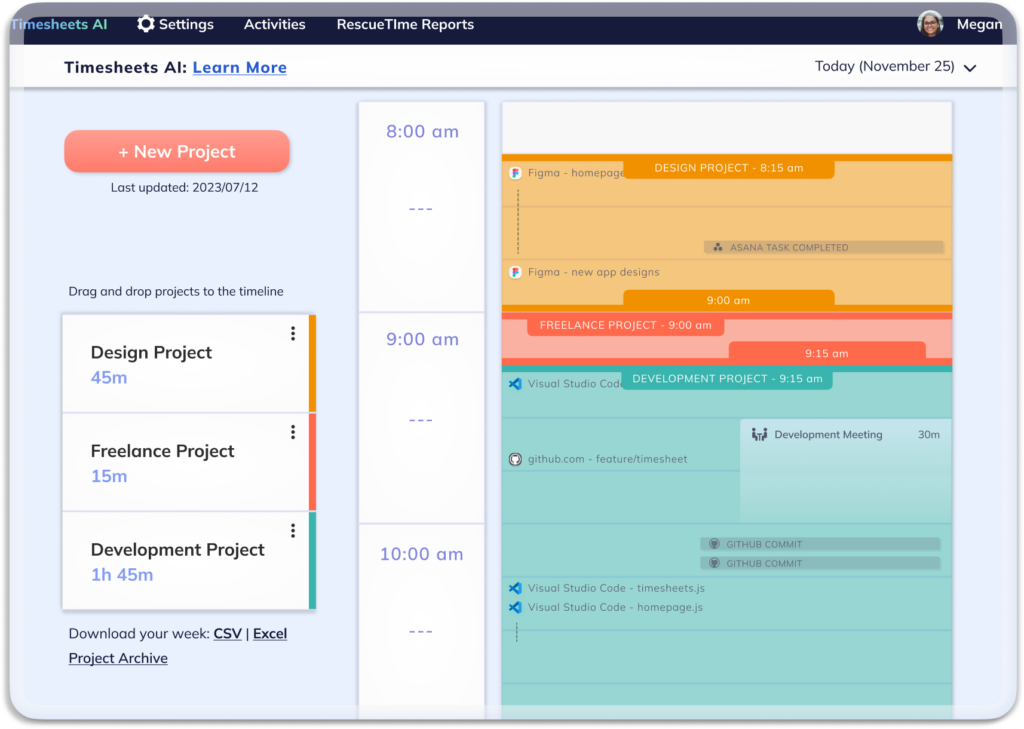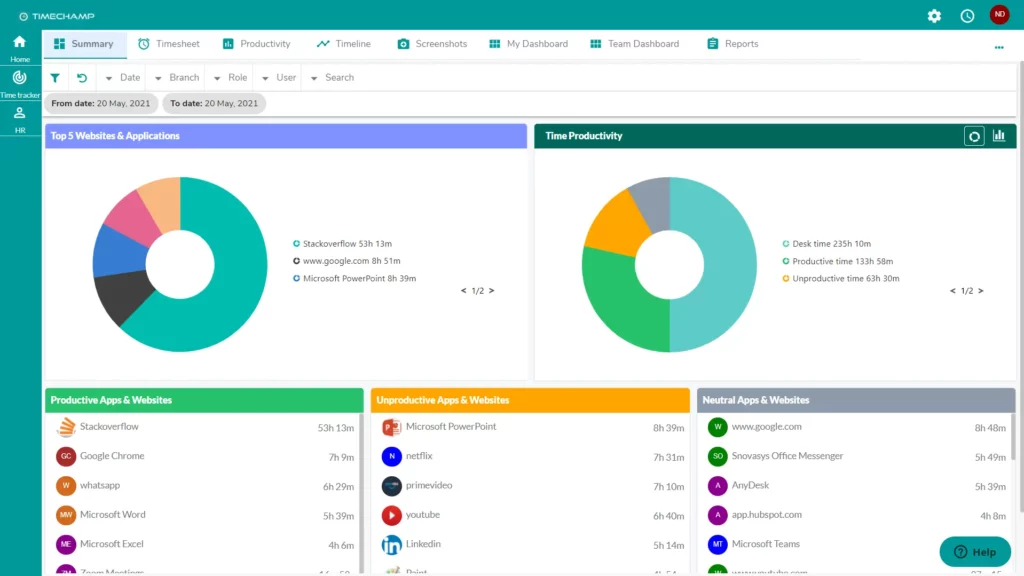In small businesses, managing time off for employees can be tricky. It’s important to have a good policy for time off – it helps the employees know what to expect and helps the business run smoothly. Using a tool like “Day Off Leave Tracker” can make this much easier. This article will talk about how to put together a good time off policy for small companies. We’ll look at why these policies are important and how using a leave tracker can make things better for everyone, making the whole process simpler and more efficient.
Understanding the Importance of a Time Off Policy
A time off policy outlines the company’s approach to managing various types of leaves, including vacation, sick days, and personal time. For small businesses, such policies serve multiple purposes:
- Clarity and Fairness: It ensures all employees are treated equally and understand their rights and obligations.
- Compliance: Adheres to legal requirements regarding mandatory leave allowances.
- Planning and Coverage: Facilitates better workforce management and coverage planning.
Key Components of a Time Off Policy
1. Types of Leave
Include all forms of leave such as annual leave, sick leave, public holidays, bereavement leave, and any other special leave categories relevant to your business.
2. Accrual and Carryover
Define how leave is accrued (e.g., monthly, yearly) and whether employees can carry over unused leave to the next period.
3. Notice and Approval Process
Outline the procedure for requesting time off, including notice periods and how requests will be approved or denied.
4. Restrictions
Specify any blackout periods or limitations on when leave can be taken, especially during peak business periods.
5. Special Considerations
Include provisions for maternity/paternity leave, disability leave, or any other legally mandated leaves.
Legal Considerations
Ensure your policy complies with national and local employment laws. This might include minimum leave entitlements, notice periods, and pay during leave.
The Role of Day Off Leave Tracker
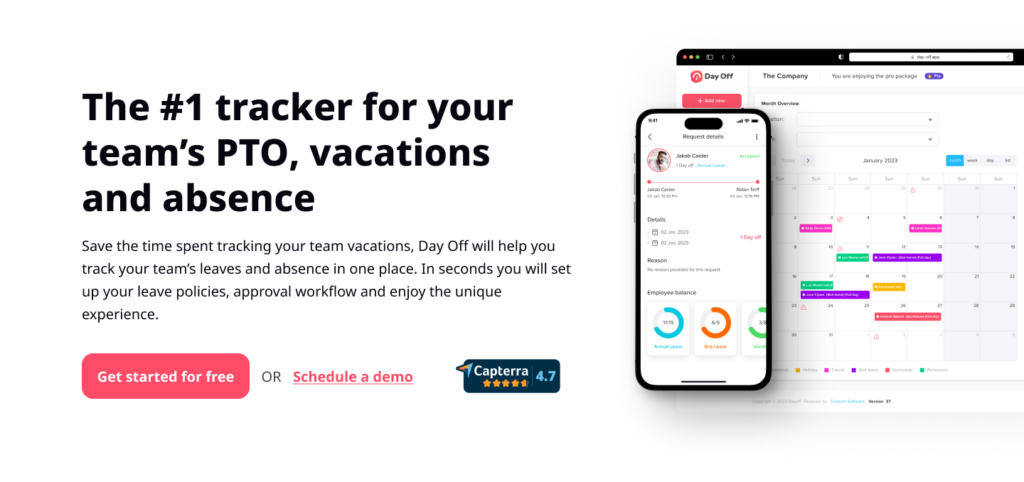
A Day Off Leave Tracker is a digital tool designed to manage and record employee leave. Integrating such a system can provide several advantages:
1. Centralized Management
It offers a single platform for both employees and managers to handle leave requests, approvals, and record-keeping.
2. Transparency and Accessibility
Employees can easily view their leave balances, submit requests, and track the status of their applications.
3. Efficient Planning
Managers can view all leave requests in a calendar format, helping in workforce planning and avoiding understaffing.
4. Compliance and Record Keeping
Automatically updates leave balances and keeps historical data, assisting in compliance with labor laws and audits.
5. Data-Driven Decisions
Generates reports and insights on leave patterns, helping in making informed decisions about staffing and policy adjustments.
Frequently Asked Questions about Time Off Policies for Small Businesses
Q1: What is the minimum amount of time off we are legally required to provide?
A1: The minimum amount of time off required by law varies by country and, in some cases, by state or region. Generally, it includes national holidays and a certain number of sick and vacation days. It’s important to consult local labor laws to ensure compliance.
Q2: How should we handle time off requests during peak business periods?
A2: You can establish a blackout period during peak times where time off requests are limited or not allowed. Clearly communicate these periods in your policy and ensure that all employees are aware of these restrictions.
Q3: Can we deny an employee’s time off request?
A3: Yes, businesses can deny time off requests based on operational needs. However, this should be done fairly and in line with your stated policy to avoid perceptions of bias or unfair treatment.
Q4: Should part-time employees have a different time off policy than full-time employees?
A4: Typically, part-time employees accrue leave at a different rate than full-time employees. The policy should clearly define how time off is calculated for different types of employment contracts.
Q5: How do we manage unscheduled or emergency leave requests?
A5: Your policy should include guidelines for emergency or unscheduled leave, balancing the needs of the business with compassion for genuine emergencies. Clear communication and a flexible approach are key.
Q6: How does a Day Off Leave Tracker help in managing time off?
A6: A Day Off Leave Tracker automates the management of leave requests, approvals, and record-keeping. It provides transparency, reduces administrative burden, and helps in planning and compliance.
Q7: How often should we review and update our time off policy?
A7: Review your time off policy annually or whenever there are significant changes in your business or local labor laws. Regular updates ensure that your policy remains relevant and compliant.
Q8: How can we ensure fairness in approving time off requests?
A8: Establish a clear process for submitting and approving time off requests, such as a ‘first-come, first-served’ basis or considering team coverage. Be consistent in applying these rules.
Q9: What should we do if an employee doesn’t use their allotted time off?
A9: Encourage employees to take their entitled leave for their well-being and to prevent burnout. Consider implementing a use-it-or-lose-it policy or allowing a certain amount of days to roll over.
Q10: Can our time off policy differ from department to department?
A10: While the basic framework should be consistent across the company, certain aspects can be tailored to different departments based on their specific operational needs.
Case Study 1: Flex-Time Off Policy in a Tech Startup
Company Profile: A small tech startup with 30 employees, specializing in mobile app development.
Challenge: With a young and dynamic workforce, the company faced challenges in balancing workloads and accommodating employees’ requests for flexible working hours and time off.
Solution: The company implemented a flex-time policy, allowing employees to choose their working hours and take time off when needed, as long as they completed their weekly hours and maintained productivity.
Outcome: Employee satisfaction improved significantly, and the company saw a decrease in turnover rates. Project deadlines were still met, demonstrating that flexibility did not compromise productivity.
Case Study 2: Unlimited Vacation Policy in a Marketing Agency
Company Profile: A small marketing agency with 20 employees, known for its creative campaigns.
Challenge: The agency wanted to attract top talent and increase employee retention by offering a unique benefit.
Solution: They introduced an unlimited vacation policy, allowing employees to take as much time off as they wanted, provided they met their performance goals.
Outcome: The policy attracted high-quality candidates. The team remained motivated and productive, with clear communication and planning ensuring no work was left uncovered during absences.
Case Study 3: Mandatory Time Off Policy in a Retail Business
Company Profile: A family-owned retail store with 15 employees, operating in a competitive market.
Challenge: The business faced issues with employee burnout and stress, particularly during peak seasons.
Solution: A mandatory time off policy was implemented, requiring each employee to take at least two weeks off per year, with one week during a non-peak season.
Outcome: Employees returned from their breaks rejuvenated, leading to better customer service and increased sales. The policy also helped in better planning for staffing during peak periods.
Case Study 4: Sabbatical Leave in a Consulting Firm
Company Profile: A consulting firm with 40 employees, offering services across various industries.
Challenge: The firm needed a way to reward long-term employees and encourage ongoing professional development.
Solution: They introduced a sabbatical leave policy, offering an extended leave of up to six months for employees who had been with the company for more than five years, for professional development or personal growth.
Outcome: The policy improved long-term employee retention and attracted professionals looking for career growth opportunities. Employees returning from sabbatical brought fresh perspectives and ideas.
These case studies provide tangible examples of how different time off policies can be tailored to meet the specific needs of a small business while enhancing employee satisfaction and business performance.





